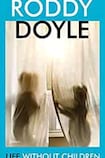
Literary fiction ought to reflect the way we live now: that’s a thing writers like to say. No doubt during the first lockdown of 2020, as they realised they were seeing history form in the raw, a large portion of the world’s writers would have considered the tricky mesh of opportunity and risk that writing about their times presented. The material was there and the stakes were high. So was the potential for universal resonance.
(There was even a well-covered crisis in which writers and publishing industry execs wondered whether to suspend projects set in non-Covid-19 conditions, fearing they would alienate the reader.) Even so, things were changing at such a pace that an article written one month could be out of date the next. Amplify this for books arriving a whole publishing cycle in the future, from composition to eventual release. And by then, if the pandemic was still with us, would readers still have an appetite to see books reflect the way they had lived for so long, without this feeling like a busman’s holiday?
Life Without Children, Roddy Doyle’s new collection of stories set from the first lockdown to 2021, draws strength from its subject matter and embodies all its challenges. It is masterful, funny, moving, tragic, familiar, and a little too familiar. The things that make Doyle’s writing great – the volubility tempered by an almost musical control, the pitch-perfect dialogue, the emotional richness, the gruff humour – are all there.
In Worms, a long-married couple reconnect over a playlist during lockdown. In The Curfew, a woman leaves her home and partner without a word when news of lockdown breaks, and disappears. We spend the rest of this very good story hearing why. More than one protagonist in Doyle’s third collection is out of work. They hate walking but have nothing else to do. “The lockdown has ripped away the padding. There’s no schedule, or job, no commute. There’s nothing saving him.” Elsewhere: “He knows it’s a weekday, that’s all. Today – the thing he’s standing in now – means nothing. He’s awake; that’s all.”
In the titular story, a man with grown-up children called Alan reflects on a time when, “up past his neck in four childhoods”, he had said no when a stranger asked him if he had kids. On a night out in Newcastle, where English Covid restrictions have yet to catch up with Irish restrictions, he is both frightened and thrilled by the comparative freedom. He imagines getting lost in it. Hen parties are everywhere: “He should follow them into whatever bar they commandeer and dive right in. They’ll pour their drinks over him. They’ll sit on him. They’ll kill him.”
Characters think in terms of restrictions: 'His side of the bed is three feet – half a social distance – from the window.'
This is a classic life-not-lived short story, accelerated by the pandemic. “He can walk up this hill to the life he never had, or walk back down to the life he doesn’t want.” When Alan takes a course the reader doesn’t expect, there’s a jolt: this life he has chosen is the life he shouldn’t live.
Characters in other stories take similar risks or want to. Putting on soiled masks from the pavement “delights” one lonely protagonist. Another realises his daughter, a frontline worker, has only been pretending to wear a mask for his and his wife’s benefit. “It delighted him. The life in the dishonesty, the humour.” Doyle also admirably demonstrates how quickly our interior lives are liable to adapt to outside limits. Characters think in terms of restrictions: “His side of the bed is three feet – half a social distance – from the window.”
Cumulatively, the pervasiveness of the Coronavirus can also be artistically unwieldy. Beginning afresh with each story, we are repeatedly told the same information to establish the scene. Social distancing, the limits of how far people can venture from home, hygiene guidance. This is partly because each story has to function alone, and partly a matter of thematic structuring when they sit together. (Other themes and motifs that recur and unify the stories in this collection include rote social obligations; people wanting to disappear from their own lives; men who get older and worry they aren’t “essential” and have already disappeared; the late blooming of relationships in the “third age”.)
But reading Life Without Children cover to cover, loving much of it, I could have done without lines like “You weren’t supposed to go further than two kilometres from your home” or “There was a man going on about washing the hands” in the final story. Conjuring a background static of Covid updates and soundbites might in itself be a powerful, accurate effect. But should a whole wave of authors replicate this pervasiveness, or our fatigue with the pandemic, readers may grow even more tired of the way we live now.












